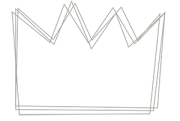“Fare Mondo” il nuovo murale di Podere Sapaio.
A Sapaio la natura diventa opera d’arte: vi presentiamo “Fare Mondo”, il murale che racconta il mondo vegetale e il concetto di “terzo paesaggio”.
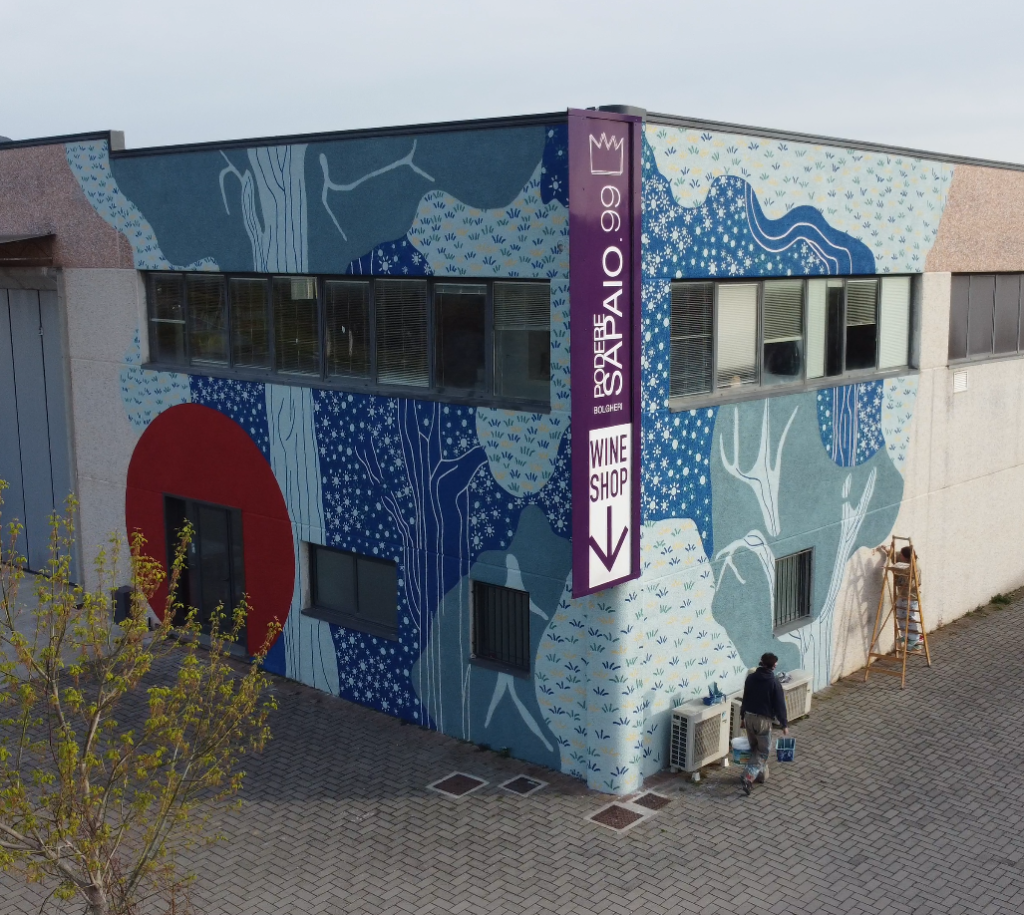
Che Sapaio fosse molto vicino all’arte è ormai cosa nota. Sin dagli albori, con la realizzazione del logo aziendale si è voluto omaggiare il writer J.M.Basquiat e negli anni, ci sono state frequenti collaborazioni con artisti di diversa provenienza, oltre che interessanti partnership con Istituzioni e realtà museali.
La video-arte, la fotografia e la grafica, applicate ai progetti social-web di Sapaio sono state dunque molto spesso protagoniste dell’identità e della filosofia aziendale, ma quest’anno c’è di più!
Le collaborazioni con il mondo dell’arte hanno toccato strade nuove e per la prima volta non saranno declinate al virtuale mondo del web e condurranno invece verso mondi reali.
“Ci siamo ispirati all’approccio ecologico di Gilles Clement, che ci invita a percepire la terra come entità viva, in cui tutti i frammenti di paesaggio ignorati ci offrono opportunità di rigenerazione; e da Emanuele Coccia, filosofo rivoluzionario del pensiero green, che ha ribaltato in modo radicale la nostra idea di cambiamento.
Messo ordine alle idee, abbiamo deciso di far diventare la Cantina di Sapaio, un capannone dall’aspetto anonimo sito nella zona industriale di Donoratico, ma anche luogo dove tutto si trasforma, la tela bianca su cui raccontare l’evoluzione del nostro pensiero.”
Il progetto si è sviluppato grazie all’incontro con due giovani artiste, Chiara Ceccarelli e Costanza Rosi, e ha preso forma diventando una grande opera murale di 140 mq, in cui è protagonista il mondo vegetale e la sua riappropriazione degli spazi urbani.
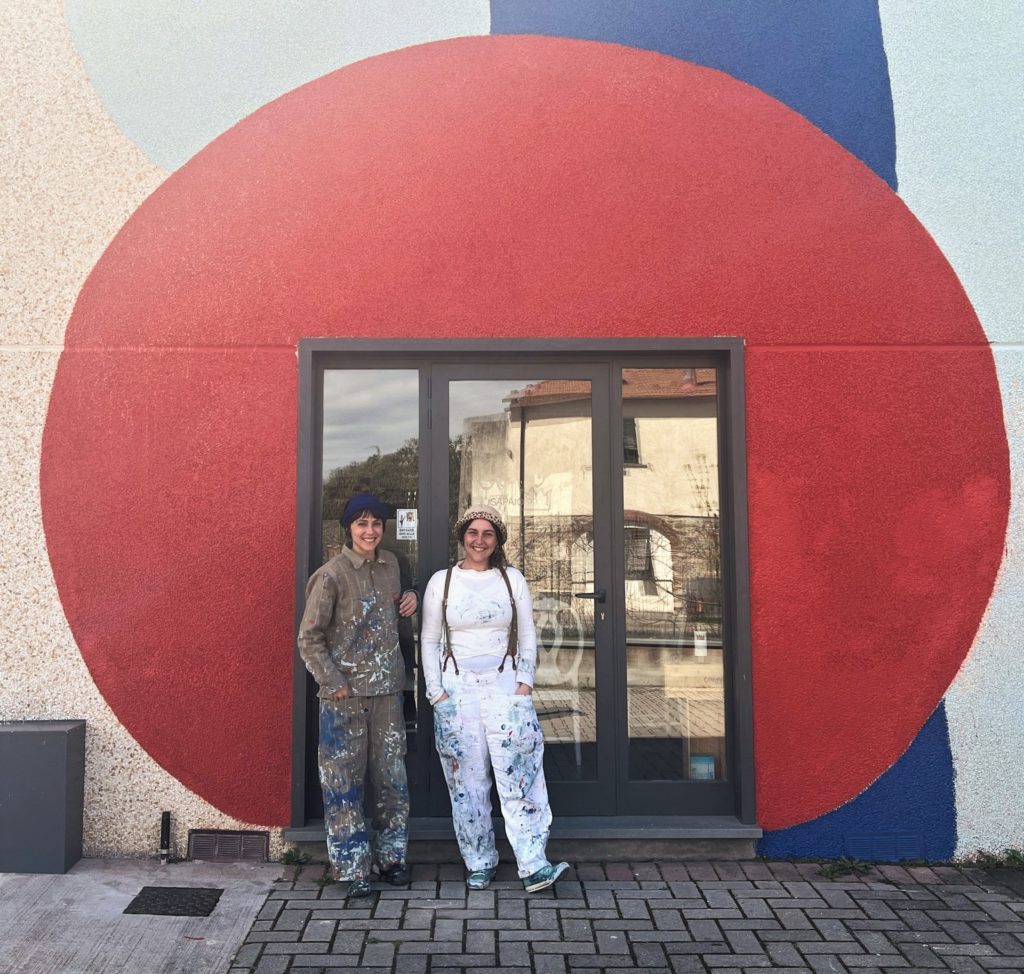
Le Artiste
Vi raccontiamo l’opera nel dettaglio scambiando quattro chiacchiere con le due artiste.
Come è nata l’opera “Fare Mondo?
“Fare Mondo” nasce dalla volontà di soddisfare l’esigenza di Sapaio di raccontarsi come Azienda sensibile al tema Natura che ben si sposa con la nostra idea di arte. Dato che la cantina si trova nella zona industriale di Donoratico, è nata l’idea di far nascere un’opera che raccontasse il concetto di riappropriazione degli spazi urbani da parte del mondo delle piante.
Il punto di partenza comune è stata la lettura del saggio “La metafisica della mescolanza” di Emanuele Coccia, libro che si concentra sul concetto di cosmogonia vegetale e dunque sull’importanza che hanno le piante nel fare il mondo in cui l’uomo vive e interviene.
Raccontateci il progetto.
L’opera si presenta come una “mescolanza” di tutti gli elementi che determinano lo sviluppo della vita sulla Terra, (primi fra tutti l’acqua e la luce) rappresentati attraverso una compenetrazione di piani e punti di vista. Il disegno prende forma dall’angolo del capannone come se fosse una pianta che rampica sull’edificio.
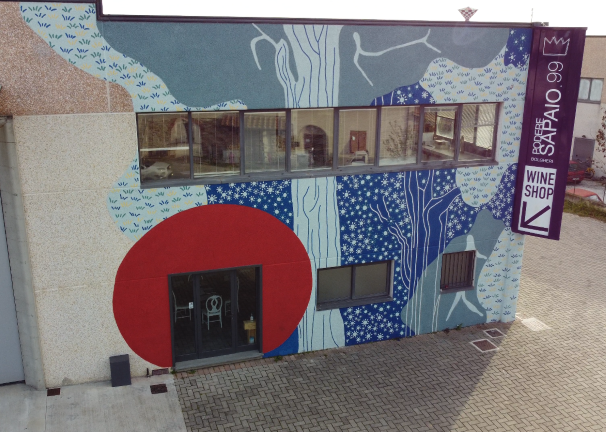
Si può notare come i tronchi degli alberi (punto di vista frontale) siano anche fiumi che scorrono tra le terre (punto di vista zenitale): ecco che gli spazi di terra immersi in un mare blu che è anche un cielo stellato sono anche le chiome dei pini di Donoratico viste dall’alto. Predominano i colori blu e verde in toni delicati rafforzati e sostenuti dal rosso Sapaio presente in forma di sfera a simboleggiare il Sole, dunque la luce.
Passiamo a qualche domanda su di voi. Il vostro rapporto con l’arte?
Costanza: Inevitabile! Da sempre ha fatto parte della mia vita in modo naturale e l’ho sempre usato per esprimere qualcosa.
Chiara: Il mio rapporto con l’arte può essere riassunto con la parola “meta- tempo” perché quando dipingo il tempo si ferma o va veloce, non lo so, però cambia.
Il vostro rapporto con il vino?
Costanza: Amo il vino, mi piace berlo con moderazione, soprattutto il rosso.
Chiara: Il mio rapporto con il vino è ottimo, un amore!
Il vostro rapporto con i social?
Costanza: Uso i social per promuovere i miei lavori e per divertimento. Mi annoiano abbastanza velocemente e quindi li uso relativamente poco, però mi piacciono.
Chiara: Il mio rapporto con i social è inversamente proporzionale all’amore che ho per il vino.
E infine una parola per descrivervi.
Costanza: Tutto fare. Sono una designer di formazione, ma disegno da sempre. Mi piace dipingere, mi piace cucire, lavorare il legno…quindi “tutto fare”.
Chiara: Tre parole. Blu, rischio, espansione.
Le artiste.
Costanza Rosi, classe ’96, castagnetana di origine, studia Design e Arte prima al Politecnico di Milano e poi all’Accademia di Belle Arti di Firenze. Ama cimentarsi in varie tecniche rappresentative e sperimentare nuovi linguaggi espressivi, dal ricamo alla street art.
Il suo profilo Instagram @melo.di.segno

Costanza Rosi
Chiara Ceccarelli, classe ’92, cresce nella campagna di Guardistallo. Si laurea in Giurisprudenza a Pisa; animata da sempre da una forte passione per l’arte, a 26 anni si iscrive all’istituto d’arte Franco Russoli dando inizio a un nuovo percorso. Si esprime attraverso la pittura ed è in continua ricerca.
Il suo profilo Instagram @la.ce.92
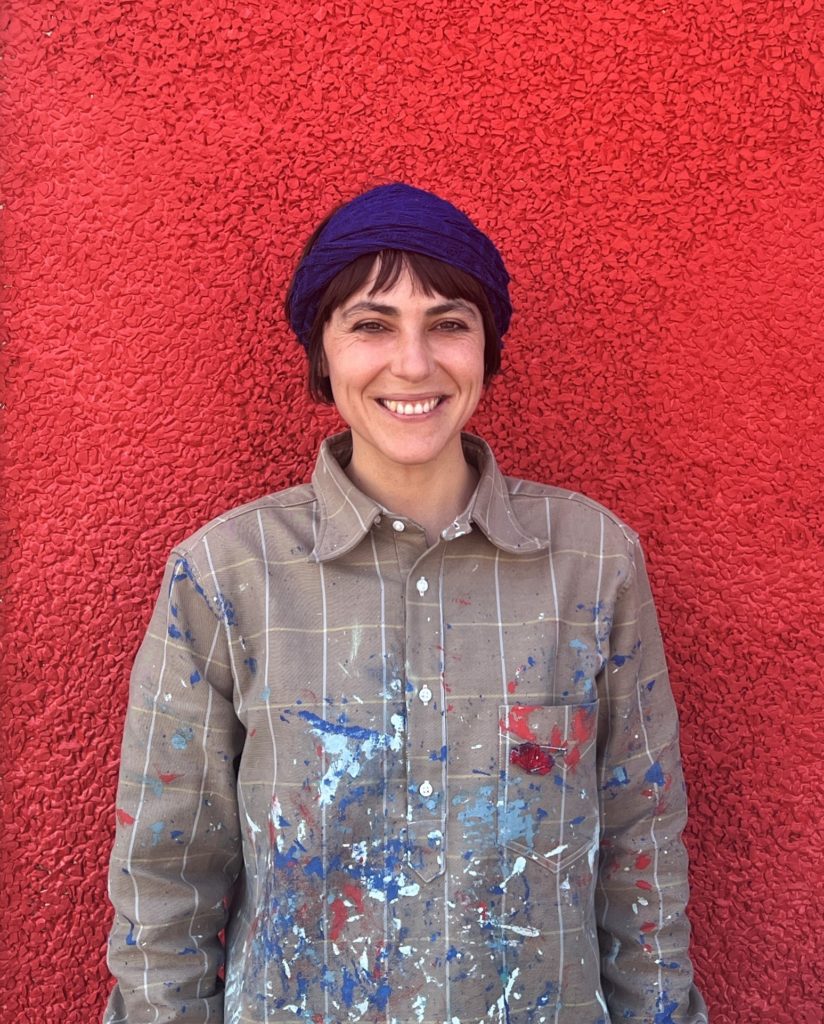
Chiara Ceccarelli
Costanza e Chiara, amiche nella vita, collaborano in vari progetti artistici.

